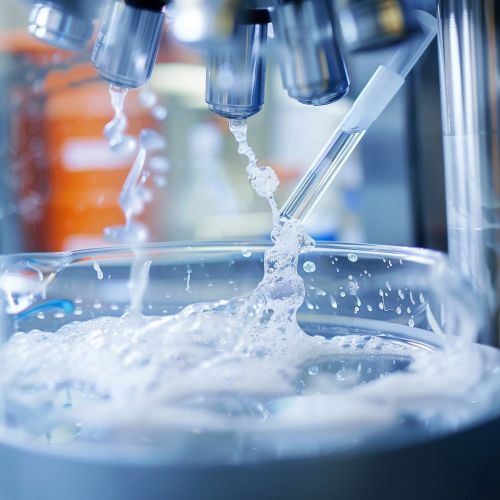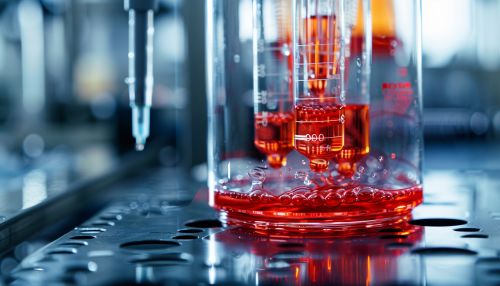Kinetics
Introduction
Kinetics, also known as chemical kinetics, is the branch of physical chemistry that deals with the study of the rates of chemical reactions. It involves the use of experimental methods to determine and evaluate the rate at which a chemical reaction occurs. This field of study is crucial in predicting the dynamics of chemical reactions and is used in various scientific and industrial applications.
Fundamentals of Kinetics
The fundamental concept of kinetics is the rate of a reaction. The rate of a reaction refers to the speed at which reactants are converted into products. This rate can be influenced by several factors such as the concentration of reactants, temperature, and the presence of catalysts. The rate of a reaction is usually expressed in terms of the change in concentration of a reactant or product per unit time.


The rate of a reaction can be determined experimentally by measuring the concentration of a reactant or product as a function of time. This is typically done using spectroscopic techniques or by monitoring the change in mass or volume of the system.
Rate Laws and Reaction Orders
The rate law is a mathematical relationship that describes how the rate of a reaction depends on the concentrations of the reactants. The rate law for a reaction is determined experimentally and cannot be predicted from the stoichiometric equation of the reaction.
The order of a reaction is the sum of the exponents in the rate law equation. It provides information about how the rate of a reaction changes with changes in the concentration of the reactants. The order of a reaction can be zero, first, second, or higher, and it can be either an integer or a fraction.
Temperature Dependence
The rate of a chemical reaction typically increases with increasing temperature. This is described by the Arrhenius equation, which relates the rate constant of a reaction to the temperature. The Arrhenius equation shows that the rate constant increases exponentially with increasing temperature.
The temperature dependence of the rate of a reaction is due to the fact that a higher temperature increases the kinetic energy of the molecules, leading to more frequent and more energetic collisions between the molecules.
Catalysts and Reaction Mechanisms
A catalyst is a substance that increases the rate of a reaction by providing an alternative reaction pathway with a lower activation energy. The catalyst is not consumed in the reaction and can therefore catalyze the reaction repeatedly.
The reaction mechanism is the sequence of elementary steps that make up a chemical reaction. Each elementary step involves the collision and reorganization of molecules and has its own rate law. The rate law of the overall reaction is determined by the rate-determining step, which is the slowest elementary step.
Applications of Kinetics
Kinetics has wide-ranging applications in various fields such as chemistry, biology, environmental science, and engineering. In chemistry, kinetics is used to design and optimize chemical reactions in industrial processes. In biology, kinetics is used to understand and model biochemical reactions in living organisms. In environmental science, kinetics is used to predict the fate and transport of pollutants in the environment. In engineering, kinetics is used in the design and operation of chemical reactors.
